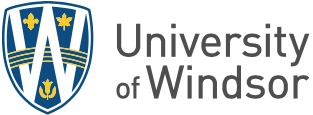 Professor Lana Parker is a founding member of the Public Education Exchange network.
Professor Lana Parker is a founding member of the Public Education Exchange network.
Lana Parker, an associate professor in the Faculty of Education and an advocate for sustainable public education, is on a mission to inform Canadians about its funding.
As a philosopher of education and language researcher, Dr. Parker examines the political economy of education and explores opportunities for a more ethically responsive system. Her passion for these issues ultimately led to her involvement as a founding member of the Public Education Exchange network (PEX).
Led by education professor Sue Winton at York University and supported by a SSHRC Partnership Development Grant, the network advocates for equitable, accessible, publicly funded, and democratically governed schools that serve the public good. With a diverse team of co-investigators from across Canada, including Parker, PEX examines the challenges facing public education, particularly funding sustainability and the rise of privatization, which often coincides with underfunding.
“Education is provincially managed, and sometimes dialogues across regions don’t happen,” says Parker. “Issues of underfunding and emergent privatization are surfacing across the country, but in ways that have historically been hard to track outside of scholarly research. Our network and website bring together those who are interested in understanding public education.”
The PEX network provides resources, hosts events, and produces a bi-annual newsletter to keep Canadians informed about public school sustainability issues nationwide.
“Whether you have a child in the system, work in education, or were once a student yourself, you are a stakeholder in public education,” Parker explains. “This is an important conversation to be a part of, because public education is a fundamental public good.”
Parker emphasizes that concerns about funding extend beyond public education to other services like health care. She encourages broader conversations about underfunding and privatization across all public services.
“Maybe you're somebody who works in health care, who sees similar patterns of underfunding and privatization emerging there,” she says. “Understanding how this is playing out in the education landscape or being part of those conversations can benefit both sectors.”
One of Parker's contributions to PEX is facilitating discussions on public education funding, including a recent interview with Ricardo Tranjan, a senior researcher on housing and social policy at the Canadian Centre for Policy Alternatives.
“Ricardo provides a very data-driven, evidence-based analysis of how education funding works and why privatisation is emerging,” Parker notes. “He explains complex funding structures and how they have changed over time.”
Throughout Parker and Tranjan’s conversation, they explore education funding, government and political discourse surrounding funding, and the broader stakes of public education, highlighting the importance of defending it.
“Public education has always been a political project,” says Parker. “It is something that was fought for, established, and supported through bipartisan governments over time, but it is also something that can disappear. Without continued advocacy, public education could diminish for future generations.”
Parker notes that discussions around funding in education often take place in academia or in political campaigns, but are rarely made accessible to the broader public.
“I think it is important for there to be straightforward, open conversation about funding in education,” she says. “Through PEX, we create a space where experts like Ricardo can break down these complex issues in an approachable way.”
A core issue Parker highlights is the normalization of underfunding and the erosion of expectations for public education.
“If students grow up only knowing an underfunded system, where programs are cut and the arts and humanities are only available through private tuition, they may lose the expectation that public education should provide these opportunities,” she warns.
She urges Canadians to recognize the importance of advocating for sustainable public education funding.
“We live in a wealthy society, and we should be able to demand proper, sustained funding for public goods without deflecting into privatized profit streams,” Parker states.
For access to Parker’s interview with Tranjan and other PEX resources, visit PEX Network.






